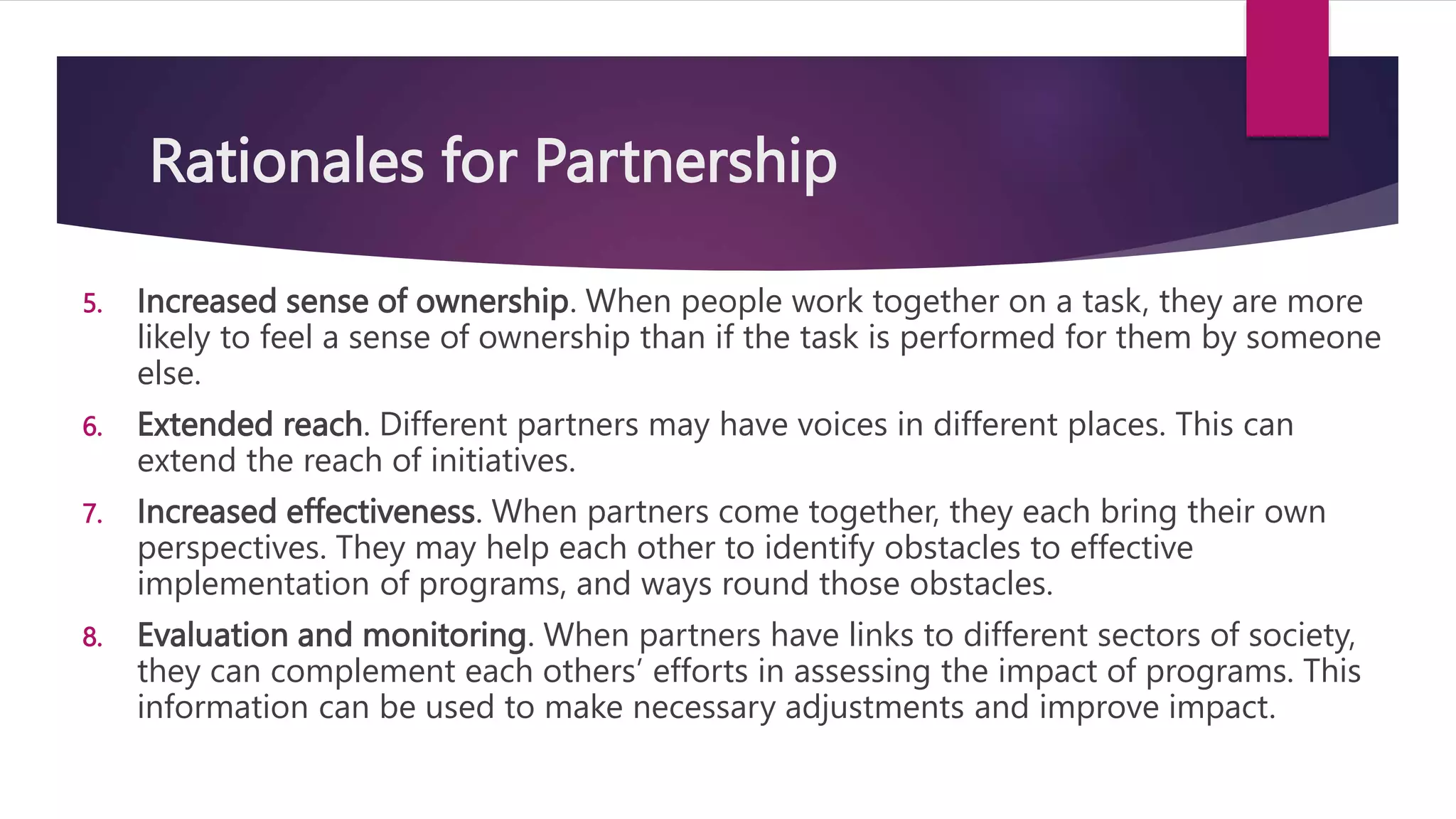This document discusses educational partnerships and community development. It defines key concepts like education, partnership, community and discusses different types of partnerships and communities in education. It outlines rationales for partnerships including shared expertise, mutual support and increased resources. The document also summarizes research on effective school, family and community partnership programs, including the six types of family involvement and challenges in implementing partnerships.




































